Tehran WWC 2.2: Harika and Padmini to fight tiebreakers
Harika had begun with indecisive play but it seems she has upped the ante in the second mini-match — she drew both her games right out of the opening. Padmini also drew her game, but her's was a Evans Gambit! Both the Indian stars will now fight in the tiebreaker.
Tehran WWC 2.2: Harika and Padmini to fight tiebreakers
All Photos by David Llada
There is something astounding about Harika Dronavalli's strategy for the Women's World Championship 2017. On the face of it, it may appear ridiculous, but maybe, just maybe, Harika has got it right?
In the first mini-match, she didn't press at all. In fact, in the second game, she was in trouble but her opponent chose to draw and fight the tiebreakers where Harika proved vastly superior. In the second mini-match, Harika has upped the ante — she drew bother her games right out of the opening.
The plan must be to conserve as much energy as possible and show her superiority in faster time controls.

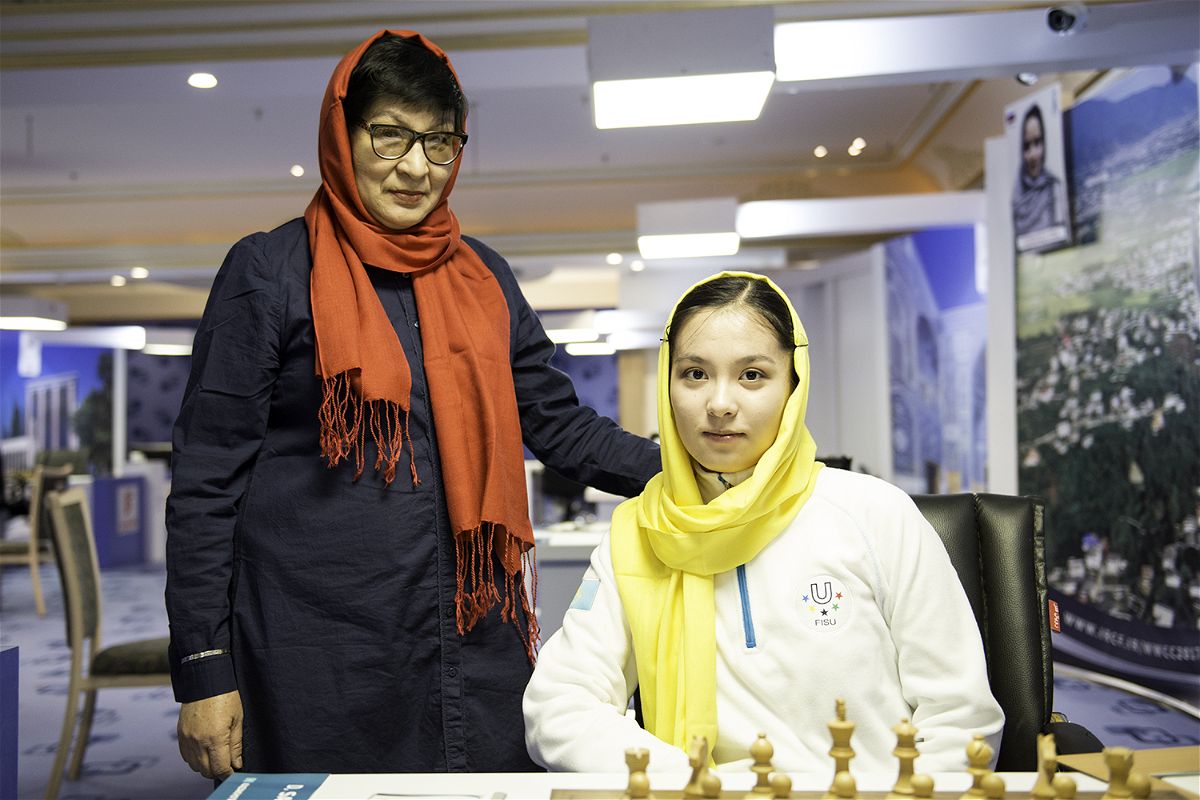
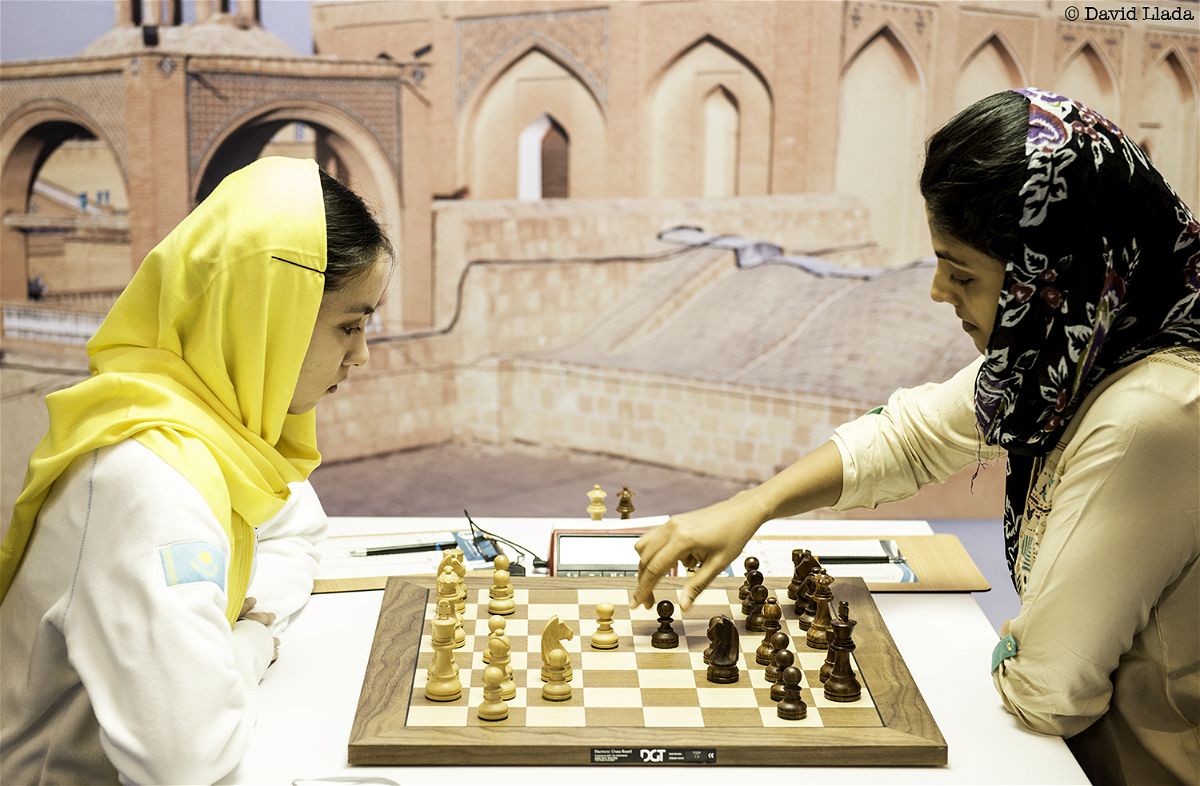
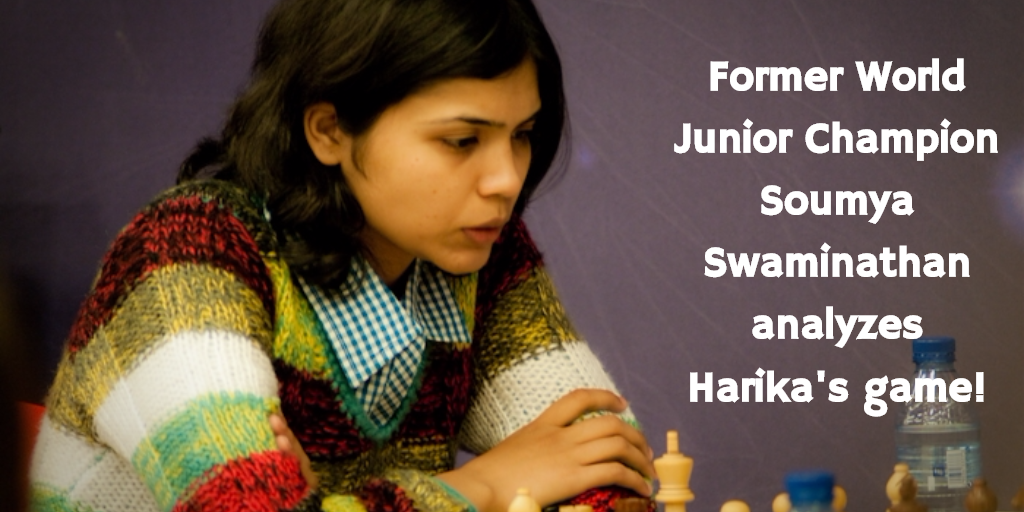
Dinara Saduakassova - Harika Dronavalli (Analysis by Soumya Swaminathan)
[Site "?"]
[Date "2017.02.15"]
[Round "?"]
[White "Saduakassova"]
[Black "Harika"]
[Result "1/2-1/2"]
[ECO "E05"]
[Annotator "Soumya"]
[PlyCount "43"]
quite quickly.} 1. d4 Nf6 2. c4 e6 3. Nf3 d5 4. g3 Be7 5. Bg2 O-O 6. O-O dxc4
7. Qc2 a6 8. a4 Bd7 9. Qxc4 Bc6 10. Bg5 (10. Bf4 Bd6 11. Qc1 Bxf4 12. Qxf4 Qd6
{was seen in the recent game Eljanov - Aronian, from Tata Steel 2017, in which
black was able to get the much longed for c5 break and equalize. Aronian went
on to outplay his opponent and won the game.}) 10... Bd5 11. Qc2 Be4 12. Qc1 h6
(12... Nc6 13. Nbd2 (13. e3) (13. Rd1) 13... Nxd4 (13... Bxf3 14. Nxf3 Nxd4 15.
Nxd4 Qxd4 16. Bxb7 Rab8 17. Bxa6) 14. Nxd4 Bxg2 15. Nxe6 fxe6 16. Kxg2 Qd5+ 17.
Nf3 c5 {is also supposed to be ok for black, so nowadays players opt to save
the pawn by 13. e3 or 13. Rfd1}) 13. Bxf6 (13. Bf4 {black anyway plays} Nd5 {
and we get a similar position as in the game, with some minor changes. As far
as I understand, bishop on e7 helps black as with bishop on f6 it is anyway
going to be kicked back after white's e4, e5. Also, it supports c5 break from
e7 - black's dream in QGD.}) 13... Bxf6 14. Rd1 a5 15. Nbd2 Bxf3 16. Bxf3 c6
17. Nc4 Na6 18. Qd2 Nb4 19. Rac1 Na2 20. Ra1 Nb4 21. Rac1 {The players decided
to repeat moves here. Not surprisingly, this position has already been played
before !} (21. h4 Qc7 22. e4 {White can push e4, e5 and try to create
something on the kingside and centre thanks to his space advantage. Black can
double on the d file and keep the pressure on d4. Once white plays e5, black can
try for c5 break. Overall assessment: Though black has his resources, I feel
this position is certainly more pleasant from White.} (22. e3 Rad8 23. Qe2 g6
24. Bg2 h5) 22... Rfd8 23. e5 Be7 24. Qe2 Rac8 (24... Rd7) 25. b3 Nd5 26. Rac1
Bb4 27. Rd3 Qe7 28. Ne3 Nxe3 29. Qxe3 Rd7 $4 30. d5 exd5 31. Bg4 {and white
won after a few moves. 1-0 (58) Lekic,D (2354)-Balaskas,N (2201) Porto Rio GRE
2015}) (21. e4 Qc7 22. e5 Be7 23. h4) 21... Na2 22. Ra1 1/2-1/2
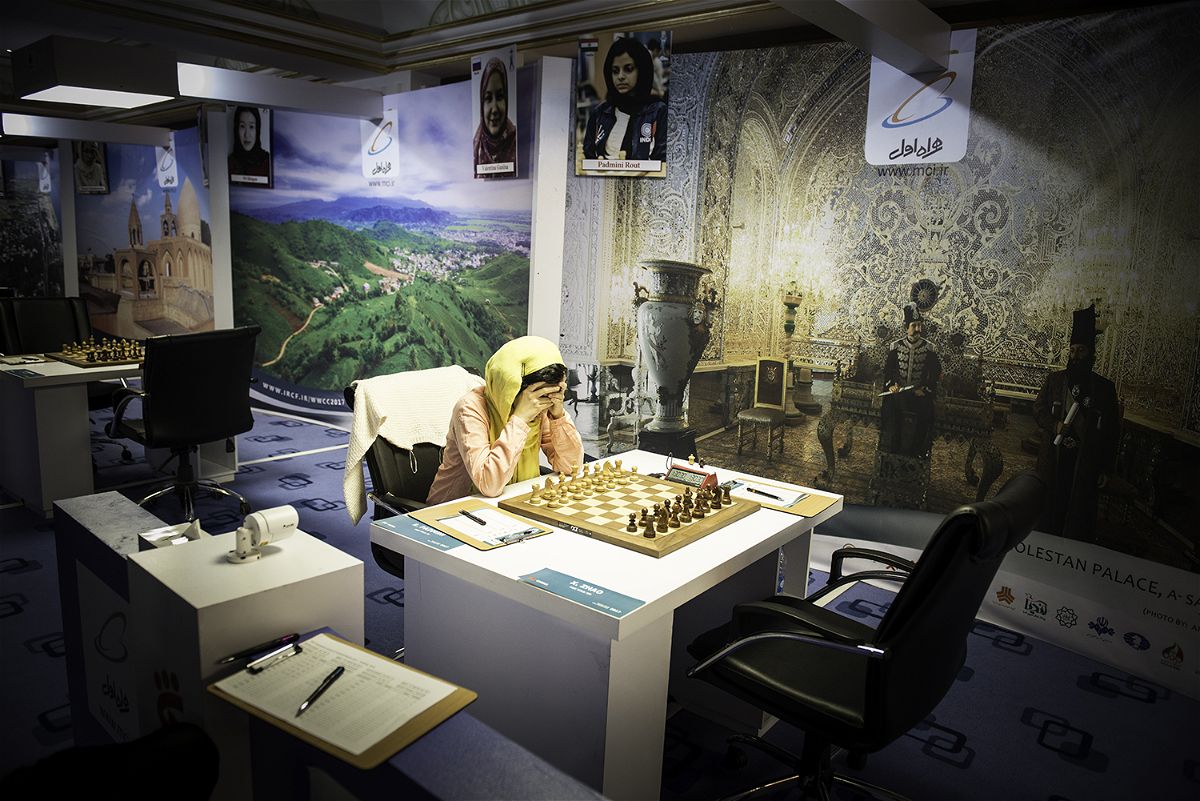
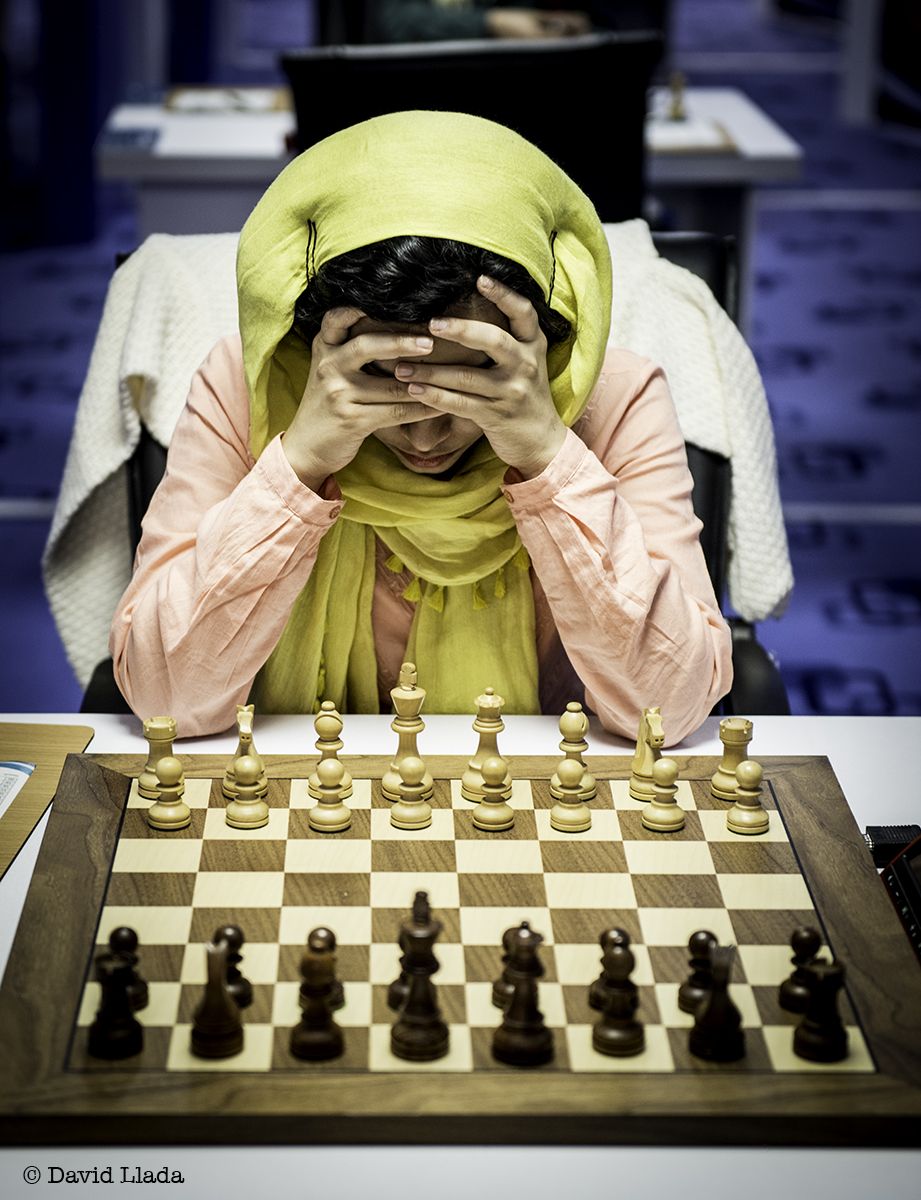
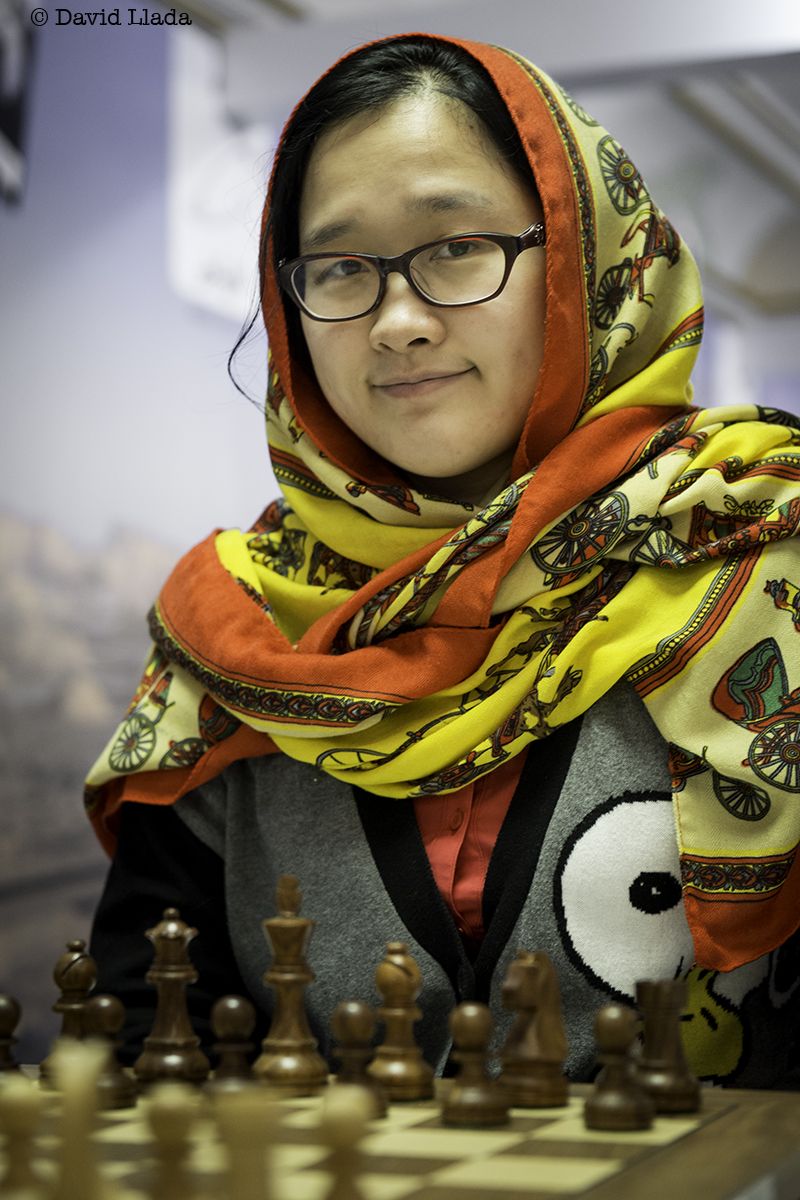
Padmini Rout - Zhao Xue (Analysis by Sagar Shah)
[Site "Tehran IRI"]
[Date "2017.02.15"]
[Round "2.2"]
[White "Padmini, Rout"]
[Black "Zhao, Xue"]
[Result "1/2-1/2"]
[ECO "C51"]
[WhiteElo "2387"]
[BlackElo "2505"]
[Annotator "Sagar,Shah"]
[PlyCount "43"]
[EventDate "2017.02.11"]
[SourceDate "2003.06.08"]
her head in her hands, 100% focussed. Deep within she knew, she was going to
play something really sharp and she needed all her concentration.} 1. e4 e5 2.
Nf3 Nc6 3. Bc4 Bc5 4. b4 $5 {Padmini to herself, "If Adhiban can play the
King's Gambit against Wesley So, I can defintely play the Evans Gambit!"} Bb6
$5 {Zhao Xue doesn't pick up the pawn. But to me this seems like a concession
in some way. In any case, it is a well established theoretical line, but it
somehow feels like Black saying, look I do not want to enter the sharp
tactical lines, so let me just play this safe move!} 5. a4 a6 6. Nc3 Nf6 7. Nd5
{This is all well known theory.} d6 (7... Nxd5 8. exd5 Nd4 {is the main line.})
8. O-O (8. Nxb6 cxb6 {Padmini must not have gone for this as both e4 and b4
are hanging. But after} 9. d3 Nxb4 10. Rb1 Nc6 11. Be3 $14 {White is already
better.}) 8... Bg4 (8... Nxe4 $5 9. d3 Nf6 10. Bg5 $36) 9. c3 (9. h3 $5) 9...
Nxd5 (9... Nxe4 10. d4 $16) 10. Bxd5 (10. exd5 Ne7 11. d4 {is also an
interesting way to continue.} exd4 12. h3 Bxf3 (12... Bh5 13. g4 Bg6 14. Nxd4
$14) 13. Qxf3 dxc3 14. Qxc3 $44 {With pretty good compensation.}) 10... Qd7 11.
h3 Be6 (11... Bxh3 12. gxh3 Qxh3 13. Nh2 $18 {is just a winning position.}) 12.
a5 $6 {Now the structure is fixed. b4-b5 is difficult to execute.} (12. Bxe6
fxe6 13. d3 {It would have made sense to keep the option of playing a5 or
going ahead with b5. In this position White surely has a slight pull.}) 12...
Ba7 13. Bxe6 fxe6 14. d3 O-O 15. Be3 Ne7 16. Bxa7 Rxa7 17. d4 exd4 18. Nxd4 {
Padmini is playing quite well, but the position has simplified to quite an
extent for her to have any realistic chance for an advantage.} Nc6 19. Nxc6
Qxc6 20. Qd4 Raa8 21. c4 Rab8 22. Rfc1 {The position is equal and a draw is a
fair result. While Harika and Padmini both played 22 moves, the games were
completely different. Harika's game was a theoretical one that saw something
that was played before for the major chunk of the game, while Padmini's Evans
Gambit was a refreshing change and a fighting game of chess!} 1/2-1/2


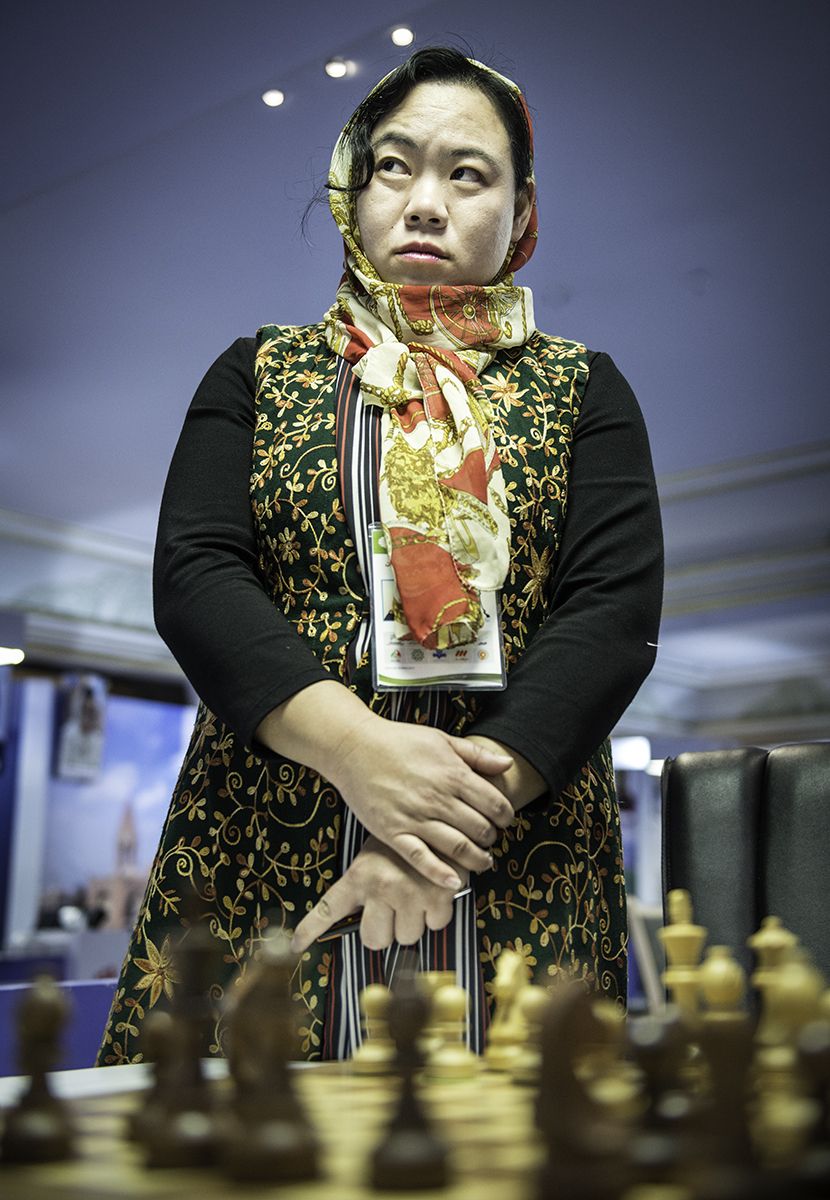

Also Read:

